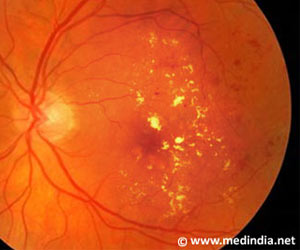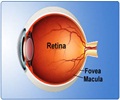Gene therapy gives new hope for age-related blindness. Scientists were able to deliver the gene for a retinal opsin into the genome of ganglion cells using an adeno-associated viral vector. The blind ganglion cells were restored and became sensitive to light.
- Scientists have developed a safe gene therapy alternative for retinal blindness.
- In people with retinal blindness, medium-wavelength cone opsin (MW-opsin) is not expressed as the rod and cone photoreceptor cells are destroyed
- To reverse this, scientists used an adeno-associated virus to target retinal ganglion cells and loaded it with the gene for a green opsin
- After being injected into the eye, the virus carried the gene into the ganglion cells which had become insensitive to light can now once again become light sensitive again thereby restoring sight
Gene Therapy for Macular degeneration
Retinal degenerative diseases like age-related macular degeneration lead to slow loss of rod and cone photoreceptors which in turn lead to blindness. People who suffer from blindness due to retinal degeneration have just one option which is electronic eye implants. In people with retinal blindness medium-wavelength cone opsin (MW-opsin) is not expressed as the rod and cone photoreceptor cells are destroyed. The scientists found that medium wavelength cone opsin (MW-opsin) enables vision even in dim light. Opsin is usually expressed only in cone photoreceptor cells and makes it sensitive to green-yellow light.Read More..
The research team then used an adeno-associated virus to target retinal ganglion cells and loaded it with the gene for green opsin. After being injected into the eye, the virus carried the gene into the ganglion cells insensitive to light and made them sensitive to light thereby restoring sight.
Opsin responded 10 times faster than rhodopsin and the researchers found that 90% of ganglion cells became light sensitive. A blind mouse affected by retinitis pigmentosa regained enough sight to distinguish between parallel and horizontal lines on an iPad.
Isacoff and Flannery (molecular and cell biology and school of optometry) went one step further and tested if the mice were able to recognize three-dimensional objects. The team is further enthusiastic about refining the therapy to enable color vision and increase visual acuity.
Isacoff and Flannery said that this simple solution could have been worked out 20 years ago. The team reported the study in an article in Nature Communications.
References:
- Berry, Michael H., Amy Holt, Autoosa Salari, Julia Veit, Meike Visel, Joshua Levitz, Krisha Aghi et al. "Restoration of high-sensitivity and adapting vision with a cone opsin." Nature Communications 10, no. 1 (2019): 1221. Retrieved on 20 March 2019 from














